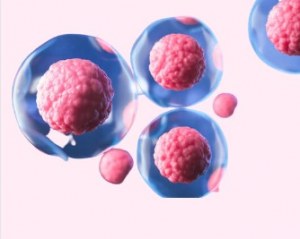
natural stem cells
Natural stem cells" generally refer to adult stem cells that are naturally present in various tissues and organs of the body. These cells are responsible for maintaining the homeostasis, tissue repair and regeneration. Unlike embryonic stem cells, which have the potential to differentiate into any cell type, natural adult stem cells have a more limited capacity for differentiation and are generally responsible for generating specific cell types within their tissue of origin.
stem cells Natural stem cells, also known as adult stem cells or tissue stem cells, have a number of distinct characteristics that make them unique and important for tissue regeneration and maintenance:
- Régénération des tissus : Natural stem cells play an essential role in the body's ongoing maintenance and repair processes. They contribute to regeneration tissues and help replace damaged or ageing cells.
- Spécifique aux tissus : Each type of tissue in the body contains its own population of stem cells specialised for that tissue. For example, muscle tissue contains muscle stem cells and skin has skin stem cells. These cells can differentiate into the different cell types needed for the tissue to function.
- Différenciation limitée : natural stem cells have the capacity to differentiation more limited than embryonic stem cells. They are generally programmed to generate only specific cell types linked to their tissue of origin.
- Auto-renouvellement : Stem cells have the ability to self-renew, which means they can divide and produce more stem cells. This process helps to maintain a stable population of stem cells in the body.
- Médecine régénérative : Researchers are exploring ways of harnessing the potential of natural stem cells for regenerative medicine. This includes studying how to improve the mobilisation, proliferation and differentiation of these cells to promote tissue repair after injury or in the event of a degenerative diseases.
- Thérapies par cellules souches : Some medical therapies involve using a patient's own stem cells to treat certain conditions. For example bone marrow use haematopoietic stem cells to treat blood disorders, and some skin treatments involve the use of haematopoietic stem cells to treat blood disorders.
Biomarkers commonly associated with natural stem cells include:
-
Oct-4, Sox2, and Nanog: Proteins that play a key role in maintaining the pluripotency of embryonic stem cells.
-
CD34 : Surface protein commonly used as a biomarker for haematopoietic stem cells, which are responsible for the formation of blood cells.
-
CD133 : Surface biomarker associated with haematopoietic stem cells, as well as stem cells from certain other tissues.
-
SSEA-1 (Stage-Specific Embryonic Antigen-1) : Antigen associated with embryonic stem cells and induced stem cells (iPSCs).
-
Lgr5 (Leucine-rich repeat-containing G-protein coupled receptor 5) : Surface marker for intestinal stem cells, involved in the regeneration of the intestinal mucosa.
-
Nestin : Protein expressed in neural stem cells and neural progenitor cells.
-
Klf4 (Kruppel-like factor 4) : Reprogramming factors used to generate induced stem cells (iPSCs) from somatic cells.
-
c-Kit :Surface marker associated with haematopoietic stem cells and other stem cell types.

